Day 4 — Tuesday, Dec. 9
All times are Mountain Standard Time.
Display Preferences
Hide/Show
8:30 a.m.–9:05 a.m. | Room 224 | Education
Facilitating Difficult Conversations: Tough Talks, Real Results
Caitlin Coppock, RRT, RRT-ACCS
Georgianna Sergakis, PhD, RRT, AE-C, FAARC, FNAP
Show description

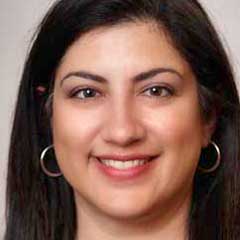
No one loves uncomfortable conversations—but avoiding them can cost you trust, clarity, and progress. “Tough Talks, Real Results” is your guide to having conversations that matter, whether you’re coaching a struggling student or addressing an issue with a team member. Learn how to deliver feedback with confidence, compassion, and purpose. Walk away with practical tools to turn tension into transformation — and silence into growth.
8:30 a.m.–11:20 a.m.
Symposium
Respiratory Care Journal Insights
8:30 a.m.–9:05 a.m. | Room 226 | Leadership & Management
Introducing Respiratory Care Reports: A New Journal for RTs
Dean Hess, PhD, RRT, FAARC
Show description
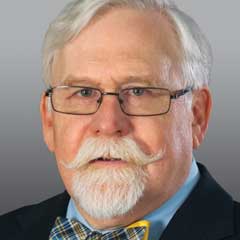
In 2025, a new journal, Respiratory Care Reports, was rolled out as a companion to Respiratory Care. This lecture will describe the content that will be published in Respiratory Care Reports and how respiratory therapists can contribute their work to this journal.
9:15 a.m.–9:50 a.m. | Room 226 | Education
Survey Research: Getting it Right
Lynda Goodfellow, EdD, RRT, FAARC
Show description

Survey research is deceptive in the complexity required up front to validate questions. Novice authors often miss these difficult steps, and the resulting research is suspect. A number of investigators have used AARConnect to conduct surveys. This is particularly problematic as it is difficult to know the denominator and therefore the response rate.
10:00 a.m.–10:35 a.m. | Room 226 | Ethics
Clarifying Conflict of Interest Policy
Denise Willis, MSc, RRT, RRT-NPS, AE-C, FAARC
Show description

This presentation will discuss the current disclosure policies and clarify conflict of interest. This includes policies regarding authorship.
10:45 a.m.–11:20 a.m. | Room 226 | Ethics
Predatory Journals — A Negative Influence on Scientific Integrity
Richard Branson, MSc, RRT
Show description

In recent years, predatory journals have grown exponentially. This is in part owing to the proliferation of online access. It is important to note that open access does not equate to predatory. Predatory journals seek out inexperienced authors, have cursory or little peer-review, and always have article processing charges that can be exorbitant. These should be avoided to protect your reputation and avoid your work languishing in a journal that isn't read.
8:30 a.m.–9:05 a.m. | Room 221 | Adult Acute Care
Scoring Systems in Respiratory Critical Care
Keith D. Lamb, RRT, RRT-ACCS, FAARC, FCCM
Show description
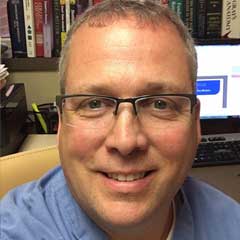
Scoring systems in critical care are commonly used to predict outcomes or treatment failure. This lecture will discuss the evidence behind the use of the ROX index, HACOR score and others.
8:30 a.m.–9:05 a.m. | Room 222 | Neonatal/Pediatric
Taking the Lead: Perspectives on RT-Driven Protocols in Pediatrics
Kimberly McMahon, MD, MSHQS
Show description

Respiratory Therapist (RT) driven protocols have been shown to improve care. This lecture will review some of the available literature on these protocols in pediatrics. Despite rewarding results, design, implementation, and sustainment can be challenging. Perspectives from an RT and a physician will be given to discuss pearls and pitfalls of RT-driven protocols in a pediatric intensive care unit (PICU) setting.
8:30 a.m.–9:50 a.m. | Room 229 | General
Agency Update
Dana Evans, MHA, RRT, RRT-NPS, FACHE, FAARC, FNAP — AARC President
Joyce Baker, MBA, RRT, NPS, AE-C, FAARC — NBRC President
Carl Hinkson, MSc, RRT, RRT-NPS, RRT-ACCS, FAARC — ARCF President
Sarah Varekojis, PhD, RRT, RRT-ACCS, FNAP, FAARC — CoARC President
Show description



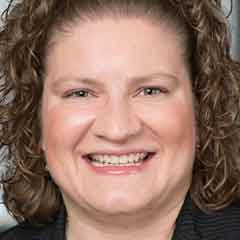
The leadership of the AARC, ARCF, CoARC, and NBRC will present the most updated information affecting the profession, research, accreditation, and credentialing. This is a must-attend session on your agenda!
This session is now approved for 1.00 CRCE.
9:15 a.m.–9:50 a.m. | Room 224 | Education
Elevate Together: Creating High Impact Experiences for Shared Benefits
Kim Clark, EdD, RRT, RRT-NPS, RPFT, RRT-SDS, RRT-ACCS, FAARC, FNAP
Daneen Nastars, RRT, RRT-ACCS, CTTS, AE-C
Nathan Pounds, MSRC, RRT, RPFT, AE-C
Show description


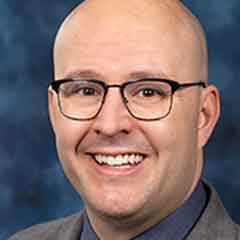
This presentation will explore effective strategies for building high-impact learning experiences to enhance student engagement in service learning, research, and interprofessional education. These experiences can foster a mutually beneficial environment where students gain valuable real-world experience while clinicians contribute to community health initiatives. Participants will learn how to create impactful, sustainable collaborations that support student development, improve outcomes, and strengthen community ties. The session will provide practical tools, best practices, and case studies to inspire and guide respiratory therapy professionals in creating win-win opportunities for all involved.
9:15 a.m.–9:50 a.m. | Room 221 | Adult Acute Care
Inhaled Sedation in the ICU: A Practical Approach for Ventilated Patients
Ivan Garcia, RRT, ECMO specialist
Show description

Inhaled sedation has emerged as a potential alternative to intravenous sedation in the management of mechanically ventilated patients in the ICU. Recent studies suggest that inhaled sedatives like isoflurane may offer advantages in specific contexts, including faster wake-up times and reduced opioid requirements. However, limited safety data on long-term use, logistical challenges, training, and the limited availability of specialized equipment remain barriers to widespread adoption. Emerging evidence on inhaled sedation, along with practical applications and considerations pertinent to respiratory care will be discussed.
9:15 a.m.–9:50 a.m. | Room 222 | Neonatal/Pediatric
Diagnosis of Pulmonary Hypoplasia and Patterns of Lung Growth
Howard Panitch, MD
Show description

Pulmonary hypoplasia results from a variety of congenital lesions in the neonate. As patients grow, patterns of lung growth emerge that are unique to the underlying cause of hypoplasia. This lecture will describe the different manifestations of pulmonary hypoplasia, and how diagnostic testing using technologies like PFTs and EIT assist in understanding patterns of lung growth and long-term impact of neonatal causes of pulmonary hypoplasia.
10:00 a.m.–10:35 a.m. | Room 222 | Neonatal/Pediatric
Pro/Con: HFV vs. CMV in Pediatric ARDS
PRO: Natalie Napolitano, PhD, MPH, RRT-NPS, FAARC
CON: Brian Walsh, PhD, RRT, RRT-NPS
Show description

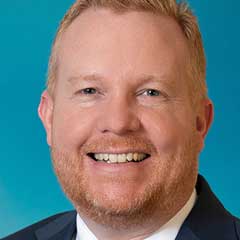
This pro/con will present the argument for and against the use of high frequency ventilation versus conventional mechanical ventilation for children with ARDS. Clinical evidence will be evaluated to explore potential benefits and pitfalls to choosing a targeted ventilatory strategy.
10:00 a.m.–10:35 a.m. | Room 229 | Leadership & Management
Facilitative Leadership
Glenn Pippen II, MBA, RRT
Show description

Closing the gap in leadership means actively identifying and addressing the shortcomings in leadership within an organization by developing current leaders, identifying potential future leaders. This lecture will provide RT leaders with skills and insight into training to effectively fill leadership roles.
10:00 a.m.–10:35 a.m. | Room 224 | Education
How to Bring Cool to the Classroom: Virtual Reality in Clinical Education
Jessica Schweller, MS, APRN-CNP, RRT-SDS, AE-C, CCSH
Show description

Keeping up with the changing world of technology can seem like a hurdle when it comes to the classroom. Student expectations are evolving as well. With the generation of technology, students have new ways of learning. This lecture will focus on the use of virtual reality (VR) in clinical education in both undergraduate and graduate students. Using real-life clinical scenarios, assessing VR patients with realistic symptoms, and expanding the clinical practice time of our students is something we have needed to enhance and have the opportunity to do so. This lecture will highlight some examples that students have encountered and showcase the expansion of clinical practice for our RT students.
10:00 a.m.–10:35 a.m. | Room 221 | Adult Acute Care
Personalizing Ventilation in Post-Cardiac Arrest Patients
Brady Scott, PhD, RRT, RRT-ACCS, AE-C, FAARC
Show description
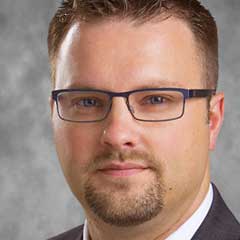
Post-cardiac arrest syndrome presents complex challenges, requiring a delicate balance of ventilatory support to optimize gas exchange, protect the lungs, and safeguard neurological function. This lecture explores evidence-based strategies for personalizing mechanical ventilation in post-cardiac arrest patients, integrating principles of lung-protective ventilation, oxygenation, and carbon dioxide management.
10:45 a.m.–11:20 a.m. | Room 221 | Adult Acute Care
Pro/Con: The Berlin Definition of ARDS: Are We Missing the Bigger Picture?
PRO: Brian Ring, PhD, MSc, RRT
CON: Gregory Burns, MAS, RRT
Show description


Challenges in applying the Berlin definition for ARDS classification and management will be examined, with a focus on current epidemiological trends, detection, adherence to lung-protective ventilation strategies, and identification of high-risk populations. Recent advances in ARDS phenotyping, incorporating physiological and breath-derived metabolomic endpoints, will be reviewed. The potential for a multimodal approach to enhance ARDS detection, categorization, and optimization of mechanical ventilation will also be explored.
10:45 a.m.–11:20 a.m. | Room 229 | Leadership & Management
Using the Safe and Effective Staffing Guide in Daily Operations
Jessica George, MHA, RRT, RRT-ACCS, AE-C
Show description

The AARCs Safe and Effective Staffing Guide (SESG) is the RT profession’s gold standard in labor management. The SESG tool is comprehensive but can be overwhelming. Leaders often struggle with where to start and how to integrate meaningful components into daily operations to support strategic staff management. This lecture will discuss the core components of the SESG and provide actionable strategies and examples for leaders to integrate components into daily operations.
10:45 a.m.–11:20 a.m. | Room 224 | Education
Three Reasons for Program Faculty to Add CPGs to Their Curricula
Lynda Goodfellow, EdD, RRT, FAARC
Show description

Understanding CPGs can be challenging for clinical practice. This presentation will provide an overview of introducing evidence-based CPGs in the classroom. Students should be informed of evidence-based practice in their programs before beginning clinical rotations. Without an introduction and exposure, newly hired entry-to-practice graduates are disadvantaged. Therefore, respiratory therapy program faculty must include CPGs in their curricula.
10:45 a.m.–11:20 a.m. | Room 222 | Neonatal/Pediatric
Non-Conventional Mechanical Ventilation in Neo/Peds, What Really Matters?
Emilee Lamorena, MSc, RRT, RRT-NPS
Show description

Conventional mechanical ventilation is still a cornerstone of therapy in many ICUs. However, there are also many non-conventional forms of mechanical ventilation that have been developed and proposed to help mitigate the risk of ventilator-induced lung injury, while improving hemodynamics and gas exchange in our patients. But are they effective at achieving these goals? This presentation will review some popular non-conventional modes of ventilation and discuss their roles in neonatal/pediatric critical care.
11:30 a.m.—11:50 a.m. | North Ballroom | General
Closing Ceremony
Dana Evans, MHA, RRT, RRT-NPS, FACHE, FAARC, FNAP
Show description

President Dana Evans will wrap-up the 2025 Congress meeting with closing remarks and reminders to attendees.
12:00 p.m.–12:50 p.m. | North Ballroom | General
13th Thomas L. Petty Memorial Lecture
Surgical and Interventional Management of Patients with COPD
Gerard Criner, MD, FACP, FACCP
Show description

Chronic Obstructive Pulmonary Disease (COPD) is a chronic inflammatory disorder affecting millions of patients worldwide. Symptoms include dyspnea, chronic cough, and functional decline resulting in significant morbidity and health care costs (31B annually in the US alone). Medication management includes an assortment of drugs with a variety of dosing strategies and inhalation devices. Management may also include oxygen supplementation and non-invasive ventilation. Over the last three decades, surgical and interventional treatments via bronchoscopy have been developed to complement medical therapies and show promise to improve patient outcomes. A combination of imaging and physiological testing identify patients most likely to benefit from these treatments that target structural abnormalities of the airway and lung parenchyma. This presentation will review surgical and bronchoscopic options for COPD.
There are no sessions that match your display preferences.
